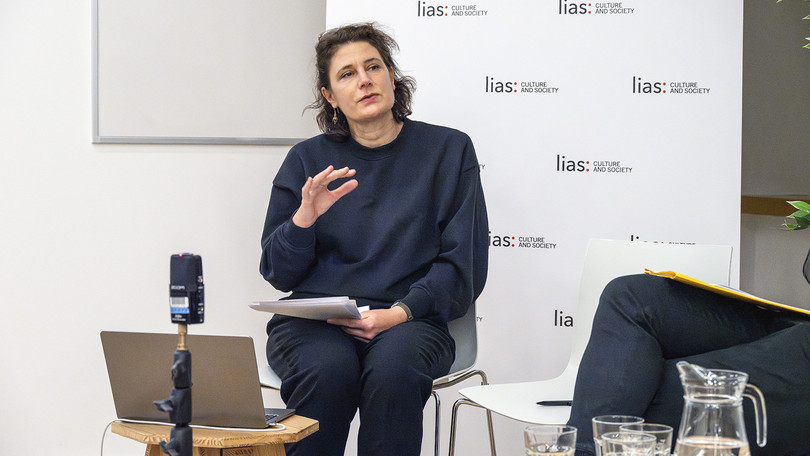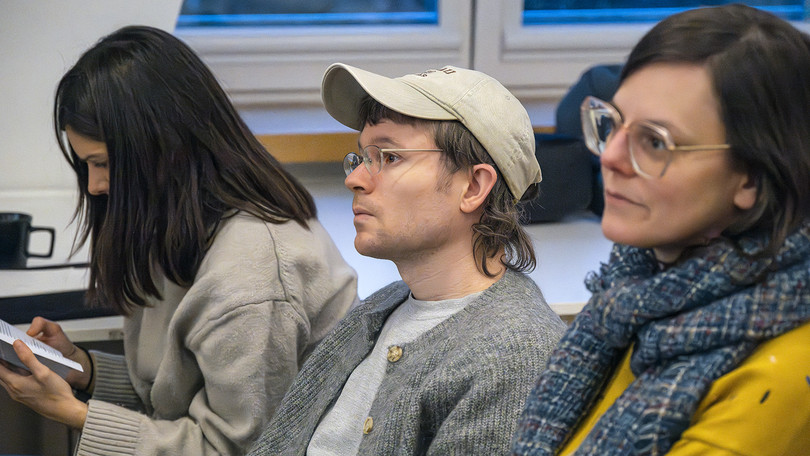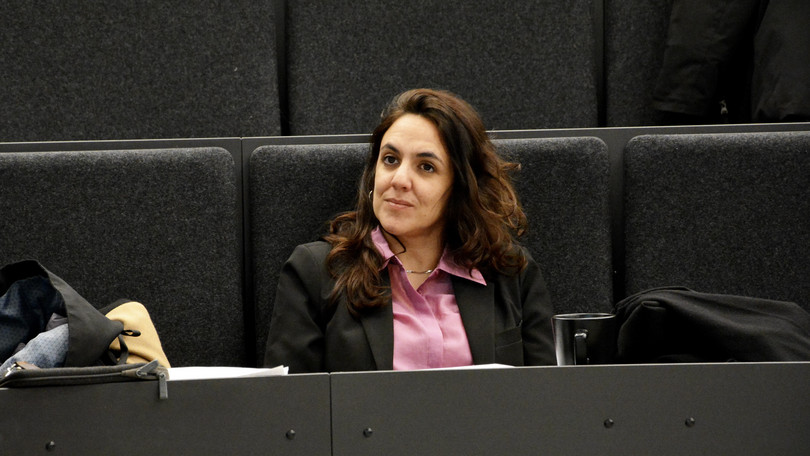Between realism and mystification – What does aesthetic sustainability look like?
2024-12-11 The workshop “Decolonizong Aesthetic Materials in Times of Catastrophe” was designed to explore various critical strategies and a decolonising imagination from a multidisciplinary perspective, in order to jointly explore new methods, approaches, and ways of producing and disseminating knowledge in the humanities, social and environmental sciences.
Some key questions were: How are certain materials intertwined with colonial ecology and politics? What new possibilities for thought and action can be developed at the interface between the Eurocentric paradigm and the mediations, suspensions or interruptions that have emerged from the so-called Global South? What are the meanings and effects of materiality in the context of current (post-)apocalyptic discourses and practices in contemporary cultural production? What connections can be made between aesthetic materials, artefacts, human and non-human bodies in aesthetic production?
The panel discussion on the topic of “Material in Transit” on 21 November began with a short lecture by Jens Andermann. The lecturer and author writes about modern Latin American art, film, literature, architecture and material culture and their intersections with the legacy of colonialism and extractivism. In his lecture “Mundus immundus: Alienation, survival and unspecific aesthetics”, he examined the role of “unspecific arts” (Reinaldo Laddaga) as a cosmopolitan and aesthetic-political challenge in times of climate crisis and extractivism. To explain this, he presented projects such as Junco by Ala Plástica, which involves various interest groups – including non-human ones – through various workshops with local communities and the planting of bulrushes. In Gilberot Esparanza's Plantas nomadas project, a solar-powered robot uses energy to clean a river. In the “Simili” project, textiles washed up on the coast are transformed into fashion accessories. These site-specific initiatives are understood as “alliances of survivance” (Gerald Vizenor/Jacques Derrida) that shift the focus from the universal art object to performative acts of resistance. They open imaginative spaces of possibility and show how the art world and local spaces become productively entangled through assemblages of human and superhuman actors.
Jordana Blejmar sheds light on the anti-colonial roots of modern materials and the role of the kindergarten and play with building blocks and abstract forms in the aesthetic shaping of the avant-garde. Building on Norman Brosterman's thesis on the significance of these materials and forms for artists such as Paul Klee or Wassily Kandinsky, she expands her view to include Latin American artists such as Joaquín Torres-García. These self-taught modernist developed toys that practised decolonial criticism of Eurocentric discourses on abstraction because, in his opinion, abstraction was not invented in Europe. Instead, he refers to the dialogue between the global North and South, which interweaves European and South American approaches. Blejmar's thesis is that these artists challenge and enrich discussions about materiality and the abolition of the separation of nature and culture from a decolonial perspective.
Kassandra Nakas examines the aesthetic practices that use living matter – fungi, plants, bacteria – to reflect colonial and socio-ecological power relations, referring to the etymological combination of colere (lat., to cultivate) and colonia (settlement) and relating it to the colonisation of exhibition spaces, such as galleries and museums. These practices make museum spaces usable for decolonising and ecological discourses. Examples such as the Orangery of Care exhibition illustrate how plants narrate colonial histories of violence, while concepts such as the Plantationocene (Haraway, Tsing) address the entanglements of soil, body, and labour. Between realism and mystification, these practices create new spaces of knowledge. They aestheticise sustainability and suggest ways for a cultural reorientation that makes ecological and historical traces visible.
Gabriel Catren's lecture is dedicated to the reconceptualisation of abstraction as a central technique of thinking and examines its potentials and dangers. Abstraction, understood as the methodical “forgetting of differences”, enables the simplification of complex lifeworlds and the creation of new concepts. Examples such as money as a “universal equivalent” (Marx) show how abstraction equates heterogeneous entities. However, this practice harbours risks, including the essentialisation and reification of concepts and the forgetting of hidden differences, which often leads to harmful simplifications. Using the principle of identity as an example, Catren shows how “procedural materiality” can de-trivialise identity. Homotopic identity, a concept from homotopy type theory, encompasses the processes of self-identification and considers internal differences or “material holes”. This view challenges traditional notions of identity by emphasising the dynamic nature of identity and its dependence on material and performative acts.
Politically, Catren critically engages with identity politics and universalism. While identity politics runs the risk of essentialising positions, universalism often ignores individual differences. Catren proposes a dialectical approach: Identity is defined as a collection of material acts that integrate differences without lapsing into essentialism. Universalism, on the other hand, is understood as a concrete, material practice that enables translations between different identities. Finally, Catren argues in favour of a political-cultural practice that embeds individual demands (e.g. for ethnicity, gender, class) in a broader, dynamic context. The result is a model of “strong objectivity” (Harding, Haraway) that considers material and precarious identities and utilises constructivist abstraction as a tool to promote plurality and justice.




